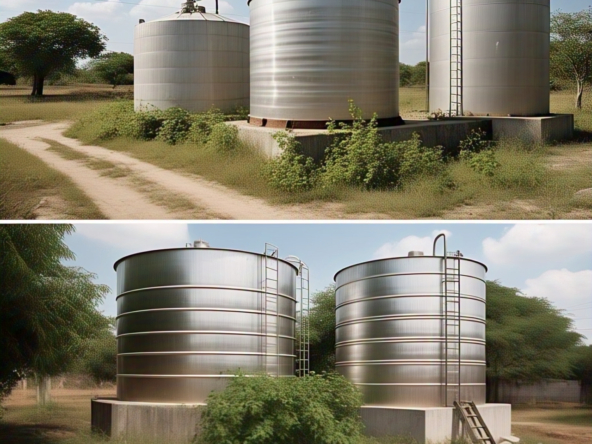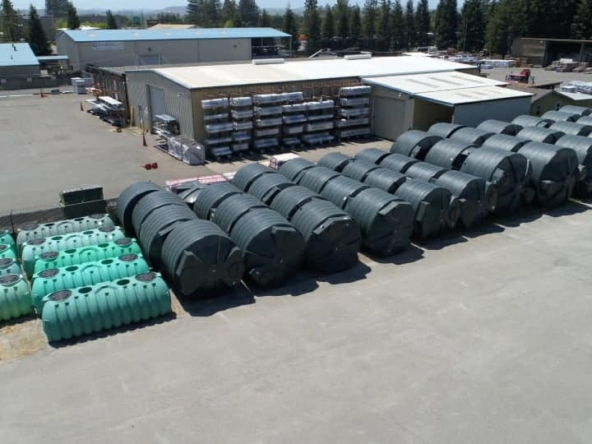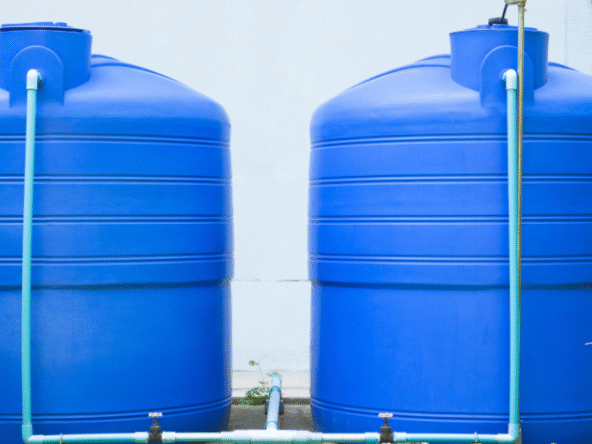Water is a basic necessity, yet millions of Kenyans still experience water shortages due to erratic supply, infrastructure gaps, or unreliable rainfall. Whether you live in Nairobi, Mombasa, Kisumu, Nakuru, or a rural village, a proper water storage system is vital.
In this comprehensive guide, we’ll walk you through everything you need to know about choosing the right water tank—from sizes and materials to prices and suppliers in Kenya.
Why Every Kenyan Home Needs a Water Tank
Access to clean water remains one of the most pressing concerns for homeowners across Kenya. While county governments and water service boards have tried to expand access, challenges remain:
- Intermittent water supply in urban estates
- Long dry spells in rural areas
- Unreliable borehole output or frequent pump breakdowns
- Overreliance on water vendors and high delivery costs
To overcome these issues, water tanks offer an affordable, scalable solution that ensures constant supply for domestic, commercial, or agricultural use.
Types of Water Tanks Available in Kenya
1. Plastic (Polyethylene) Water Tanks
Also known as roto tanks, these are the most common in Kenyan households:
- Lightweight and easy to transport
- Resistant to UV radiation
- Food-grade and non-corrosive
- Easy to install and maintain
Popular brands: Roto Moulders, Kentank, Toptank, Techno, Jumbo, Jojo, Royal.
2. Steel Water Tanks
Ideal for high-capacity or elevated storage, steel tanks are:
- Highly durable
- Suitable for industrial use
- Require anti-rust treatment
However, they’re heavier and costlier to install.
3. Concrete Water Tanks
Best for underground or semi-permanent setups:
- Customizable size and shape
- Long lifespan (20+ years)
- Expensive initial construction
4. Underground Water Storage Tanks
Perfect for space-saving, these tanks can be:
- Polyethylene-based or reinforced concrete
- Protected from sunlight, vandalism, and temperature fluctuation
- More expensive due to excavation and reinforcement
5. GRP (Glass Reinforced Plastic) Tanks
Used in commercial buildings and hospitals:
- Durable and fire-resistant
- High upfront cost
- Long installation process
6. IBC Tanks (Intermediate Bulk Containers)
Ideal for small-scale or mobile use:
- 1,000 litres capacity
- Easy to transport
- Good for construction sites, small farms, or remote areas
Choosing the Right Tank Size
One of the most critical decisions is determining how much water you need. Here’s a rough estimate:
| Household Size | Daily Use (Litres) | Recommended Tank Size |
|---|---|---|
| 1–2 people | 150–300 L | 500 – 1,000 L |
| 3–5 people | 450–750 L | 1,500 – 2,500 L |
| 6–8 people | 900–1,200 L | 3,000 – 5,000 L |
| 8+ people / garden use | 1,500+ L | 5,000 – 10,000 L |
If your area has irregular supply or frequent dry spells, consider a larger tank with at least a week’s buffer.
Water Tank Prices in Kenya (2025 Guide)
Prices vary based on material, brand, and capacity. Below are average market rates:
🔹 Plastic Water Tanks (Roto, Kentank, Toptank)
| Capacity (Litres) | Price Range (KES) |
|---|---|
| 500 L | 4,000 – 9,280 |
| 1,000 L | 8,000 – 13,680 |
| 1,500 L | 11,000 – 18,000 |
| 2,000 L | 14,000 – 24,120 |
| 3,000 L | 17,500 – 32,430 |
| 5,000 L | 33,900 – 60,830 |
| 10,000 L | 69,700 – 123,865 |
| 16,000 – 24,000 L | 140,000 – 339,350 |
🔹 Concrete & Underground Tanks
- 3,000 L: KSh 60,000–90,000
- 6,000 L: KSh 120,000–180,000
- 10,000 L: KSh 200,000–300,000
🔹 IBC Tanks
- 1,000 L: KSh 7,000 – 12,000 (used)
Key Considerations When Buying a Tank
a) Water Source
- Piped water vs borehole vs rainwater harvesting
- Use of filters, pumps, or pressure tanks
b) Purpose
- Domestic use: kitchen, bathroom, laundry
- Agricultural: irrigation, poultry, livestock
- Commercial: restaurants, offices, schools
c) Location & Installation
- Ground level vs elevated platforms
- Accessibility for filling and cleaning
d) Brand & Warranty
- Always go for KEBS-certified brands
- Most reputable brands offer 5–10 years warranty
Accessories That Improve Water Management
To optimize your water system, consider:
- Water pressure tank: maintains consistent flow
- Petrol water pump: useful in rural areas with unreliable power
- Rainwater gutters and filters for clean catchment
- Well pressure tank or expansion tank to reduce stress on plumbing
- Slimline tanks or rectangular tanks for narrow spaces
- Portable water tanks for farms, construction, or emergency use
- Diesel tanks, fuel tanks, or bunded oil tanks for multi-purpose setups
Where to Buy Water Tanks in Kenya
You can buy tanks from:
Local Suppliers
- Roto Moulders, Kentank, Toptank outlets
- Hardware stores in Nairobi, Eldoret, Kisumu, Nakuru
Online Platforms
- Jiji.co.ke, Copia, Hotpoint, House & Home
Sacco & Bulk Buyers
- Shelloyees Sacco and others offer discounts for members
Real Buyer Tip: Don’t Just Look at Price
Other things to verify:
- UV and food-grade certification
- Wall thickness (longer durability)
- Delivery and installation services
- Spare parts for accessories (valves, filters, taps)
Frequently Asked Questions (FAQs)
Q: What’s the best tank for rainwater harvesting?
A: A 3,000–5,000 L plastic tank with a rainwater inlet, filter, and overflow system.
Q: Can I use an underground tank in Nairobi?
A: Yes, especially in high-density estates where space is limited.
Q: Is it cheaper to buy used IBC tanks?
A: Yes—but ensure they haven’t stored chemicals or oil.
Q: How often should I clean my tank?
A: At least every 6 months.
Conclusion: Which Tank is Best for You?
If you’re a small family in a city estate, a 1,000–2,000 litre plastic tank is perfect. For large families or rural setups, go for 5,000–10,000 litres. Need extra durability? Opt for concrete or steel tanks.
For expert tips, verified seller links, and bulk deals, visit houses4salekenya.com—your trusted platform for everything water and housing in Kenya.




